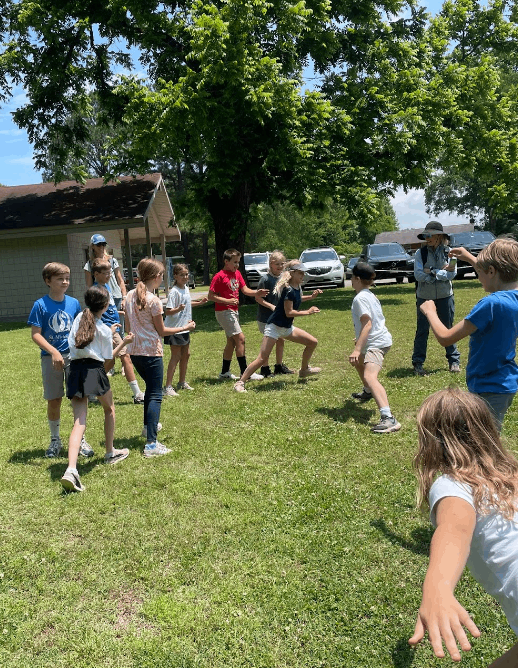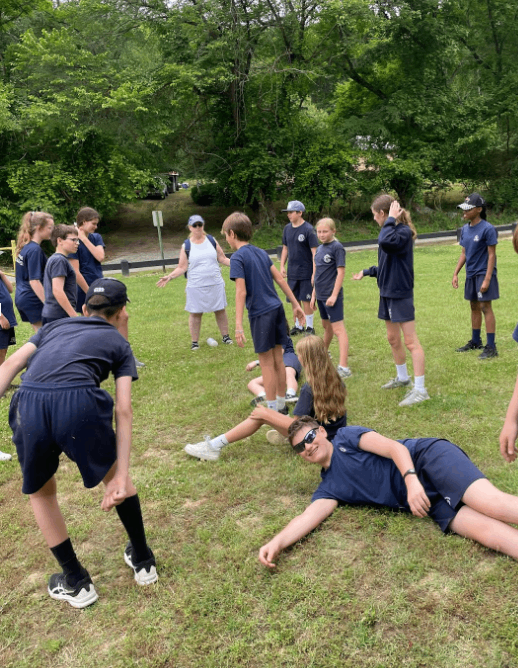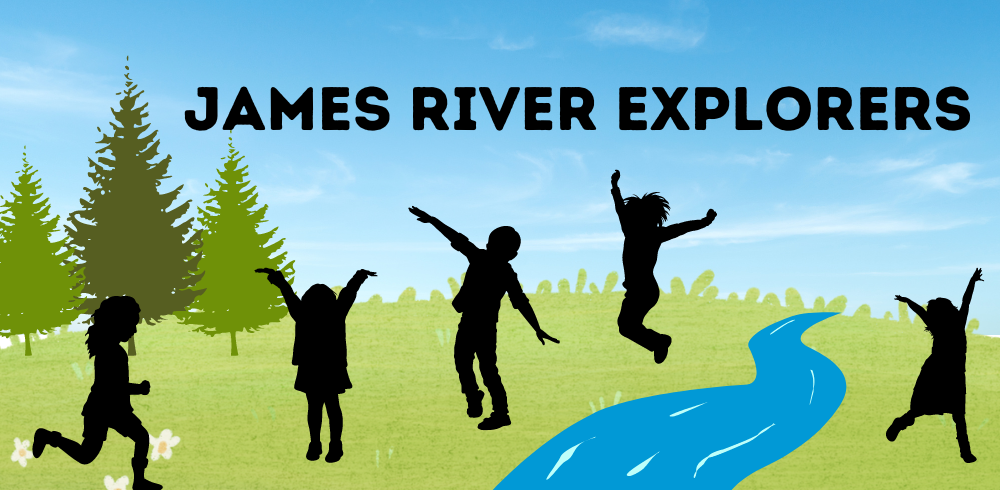Hello Watershed Scientists! My name is Mauren, and I am an educator at the James River Association!
Let’s start by imagining something for a minute: Imagine you pour half a cup of dirt into a cup full of water, and stir it up.
Now, imagine trying to separate the dirt back out of the water….Not very easy, is it! The water turns cloudy and murky, and the dirt seemingly dissolves into the water!


Often, when I tell students that the biggest pollutant in the James River is DIRT, or sediment, they ask, “Why not just clean the dirt out of the water?” Well, if it’s hard for us to clean dirt out of just a cup of water–can you imagine trying to separate the dirt out of water in an entire river?
Some awesome living things DO clean sediment out of the water naturally (see oysters, freshwater mussels and wetlands!), but the best way to clean the James River is to prevent excess sediment from getting into the river in the first place!
A Riparian Buffer does just that–
it prevents sediment from getting into the river. A riparian buffer is a wall of trees, shrubs and grasses that secure the sediment on a river bank, and also prevent loose sediment from flowing into the water! Riparian buffers can occur naturally, or can be planted by humans.
Riparian Buffers help manage rainwater that can otherwise carry lots of sediment with it. They do this by slowing rainwater down, and spreading it out, and soaking it in!
Below is a game that we play to demonstrate effective riparian buffers. Play with your class, your friends, or family! You can also visit our Buffer Program website to learn more about how buffers work and why they matter!

Trees and Rangers
Game Run Time: 20 – 30 minutes
Materials:
- Ropes or cones
- 8-20 people
Set Up
Have players stand in a line facing one direction. Lay out one boundary, directly behind the players, using a rope or two cones.
Lay the second boundary out 20 yards away from the line. This boundary is the “River”
Introduce the playing field to your players as a “Park”.
Choose one player who would like to be the “Park Ranger.”
For the first round, all of the other players are pieces of dirt, or “Sediment.”
Round 1
Introduce the problem:
Welcome to the beautiful Park! People love this park, because they can drive here, and park their cars right next to the river in this parking lot! But recently, the Park Ranger has been noticing a problem. Up the hill from the park, the town is building a new movie theater, which means that a lot of loose sediment is nearby. And so whenever it rains, loose sediment from the construction site gets picked up by rain drops, flows over the parking lot and straight into the River! The Park Ranger knows that excess sediment in the water can cause the river to be a dark place to live: underwater plants can’t get the sunlight they need to survive, and fish have a hard time navigating and laying their eggs!
Tell the players that it is starting to rain, and that the rain drops are picking up pieces of sediment and carrying it to the River. Their goal is to get from their line to the River.
Once all players have crossed into the river, ask them reflection questions:
How easy was it to get to the river over this Parking Lot?
Did the Parking Lot force the sediment to slow down? Spread out Soak in?
Round 2
Begin again with a story:
The Park Ranger knows that in order to do something about all of this sediment getting into the River, they can plant trees and grasses!
Advise the Park Ranger to choose one piece of Sediment that they would like to pull out of the line, and place in the middle of the parking lot. This “Tree” must stay rooted in place, but can tag pieces of sediment as they flow past. If the pieces of sediment are tagged, they become another tree and stay rooted in the place where they were tagged.
Send Sediment to the river past the lone tree.
Ask: Is one tree slowing water down? Spreading water out? Soaking it in? Is this a very effective barrier for the sediment? What might the Ranger need to do in order to prevent more sediment from getting through?
Round 2
Invite the ranger to choose 2-3 more pieces of Sediment that will turn into Trees. Tell the Ranger to think about where they will plant each tree so that it will slow down and spread out the water that is carrying the Sediment.
This time, when the Sediment moves through, they will likely be slowed down, and some will probably be tagged and turned into more trees.
After the round, ask: During that round, were the trees slowing water down? Spreading water out? Soaking it in? Is this more effective than 1 single tree? More effective than the parking lot?
Continue as many rounds as needed to prevent all Sediment from passing into the River.
Reflection
Today the Ranger used trees to build a Riparian Buffer. Over the course of the game, we learned what makes a riparian buffer effective. What makes an effective Riparian Buffer?
What is one thing you can do in your own yard at home to help prevent sediment pollution?




